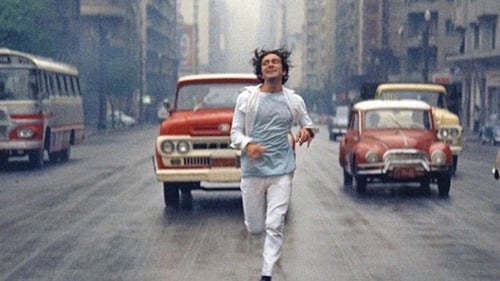Sérgio Santeiro
出生 : 1944-12-20, Rio de Janeiro, Rio de Janeiro, Brazil

Himself

Ele mesmo

Man in white

Director
The charming soul of the streets.

Screenplay
The charming soul of the streets.

Director
Paratodos, speech to the University Council of the Fluminense Federal University in May 2007 against the privatization of Unitevê - university channel of Niterói and the dismantling of the University's audiovisual by the Rectory.

Producer
Musical documentary about Alfredinho's Bip Bip, featuring Cristina Buarque and Elton Medeiros.

Director
Musical documentary about Alfredinho's Bip Bip, featuring Cristina Buarque and Elton Medeiros.

Writer
What happens when two friends meet.

Director
What happens when two friends meet.

Director
Criticism of renowned filmmakers to the boycott of the 1976 Law that regulated the exhibition of short films in commercial movie theaters in Brazil. The success of the result of this Law fostered the production of films in this category that were very well received by the public. Olho no Olho is a denunciation of the colonialist power that strangles the national audiovisual media and aims to reformat the world in its image.

Producer
Prestes on May 1, 1987 at an event held by CUT in São Paulo.

Director
Prestes on May 1, 1987 at an event held by CUT in São Paulo.

In the face of images that are transfigured, inside a mushroom of an explosion already begun, the narration of a rude Latin American poem tells occurrences and impressions of the sixties, seventies and eighties in Brazil and Latin America, with some memory failures. The film was made from the technique of direct animation in the film.

Producer

Screenplay

Director

Laughed at when he announced the discovery of the elixer of life, Brazilian scientist Expedito Vitus ends up making the most important archaeological discovery of the century: the tomb of Runamb, the Mummy, in the sands of Egypt. Back in Brazil, he brings the Mummy back to life.

Writer
Documentary about the painter Ismael Nery, which intersperses daily street scenes with paintings by the artist, under the narration of his 1931 Post-Essencialista poem.

Director
Documentary about the painter Ismael Nery, which intersperses daily street scenes with paintings by the artist, under the narration of his 1931 Post-Essencialista poem.

Director

Screenplay
Documentary about UFF on the occasion of the 15th anniversary of its foundation.

Director
Documentary about UFF on the occasion of the 15th anniversary of its foundation.

Screenplay
"A view of São Paulo's rural architecture, from the remains of a sugar mill from the 1500s to a farm at the height of the coffee cycle in 1822. Documentary illustrating Morada Paulista, book by Luis Saia". (ACPJ/CCM)

Director
"A view of São Paulo's rural architecture, from the remains of a sugar mill from the 1500s to a farm at the height of the coffee cycle in 1822. Documentary illustrating Morada Paulista, book by Luis Saia". (ACPJ/CCM)

Associate Producer

Producer
Set of carioca sketches.

Writer
Set of carioca sketches.

Director
Set of carioca sketches.

Screenplay

Director

Director
It accompanies the manufacture of soluble coffee.

Writer
It is the magazine that continues the Modern Art Week of 22.

Director
It is the magazine that continues the Modern Art Week of 22.

Assistant Director
An allegory about Brazil's history and the struggle for power since the 1930 Revolution until the advent of the TV.

Screenplay
"Life and work of the Maranhense poet Sousândrade (1833-1902), illustrated with engravings on Brazilian history, from the discovery to the proclamation of the Republic."

Director
"Life and work of the Maranhense poet Sousândrade (1833-1902), illustrated with engravings on Brazilian history, from the discovery to the proclamation of the Republic."

The tensions experienced by three different people during the military dictatorship in Brazil: a politician, a revolutionary and a common citizen.

Writer
Parable about the 1964 military coup in Brazil, where three characters unite through the exercise of the word.

Director
Parable about the 1964 military coup in Brazil, where three characters unite through the exercise of the word.














